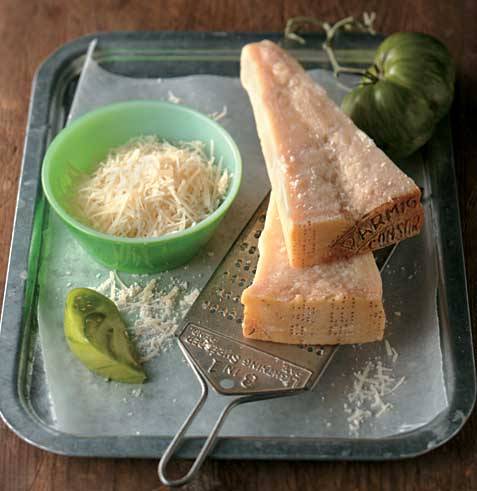King of cheese – how Parmigiano-Reggiano is made
Parmigiano-Reggiano has been a tradition in Italy for more than nine centuries. In fact, its popularity and long-standing history have earned it the nickname, “King of Cheese.”
The art of making Parmigiano-Reggiano has been passed down through families for generations. The fundamental steps to making the cheese have not changed in more than 800 years. The ingredient list is also the same – it’s still made using only milk, rennet and salt.
Parmigiano-Reggiano has DOP (Denominazione di Origine Protetta) designation, meaning it must be produced under strict guidelines in order to be stamped “Parmigiano-Reggiano.” One of the most important guidelines is geographical production area. The cheese must be made in the provinces between the Po and Reno rivers – Parma, Reggio Emilia, Modena, Mantua or Bologna. The milk produced in this region is known for being exceptionally rich.
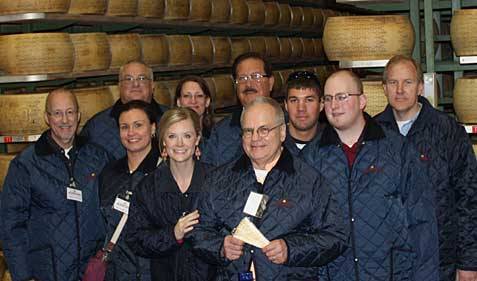
Now, let’s take a quick peak at the actual production process!
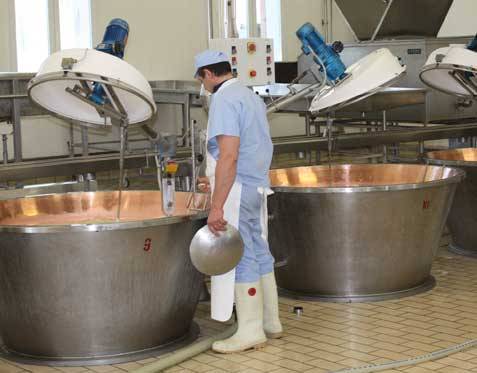
Parmigiano-Reggiano is made with cow’s milk. It’s left in the tubs (pictured) to rest overnight so the fatty part rises to the top. In the morning, the top is skimmed off and the remaining milk is then mixed with fresh whole milk. Rennet and starter whey from the previous batch are then added.
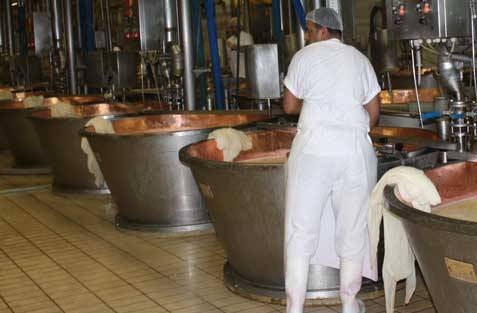
After about 10 minutes, the mixture coagulates into curd. Next, the curd is stirred and broken into small pieces. The small pieces are cooked until they all sink to the bottom.
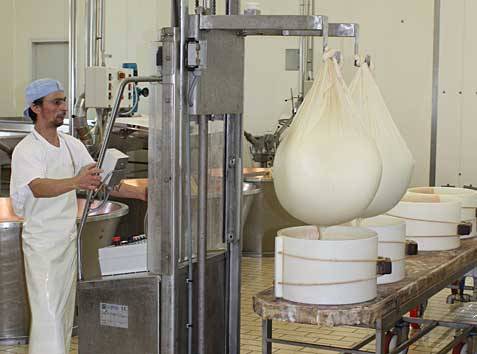
The curd is left to rest at the bottom of the vat for about half an hour until it forms a solid mass. It’s then taken out of the vat and cut into two equal halves – every wheel of Reggiano has a twin! The two large curd balls are then put in plastic wheel forms. It takes around 130 gallons of milk to make one wheel of Parmigiano-Reggiano.
Next, a weight is put on the top of each wheel to help compress the curd and release excess moisture. Each cheese is given a production number and stamped with the time of production.
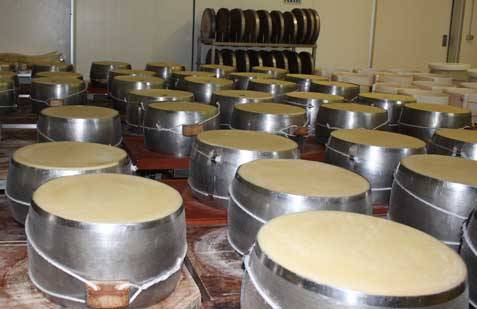
The cheese is then transferred into metal holding containers where it sits for about three days. During this time, it is intermittently turned to keep the internal composition even. This process also helps form the integrity of the wheel shape.
Next, the wheels are unwrapped and taken to be brined in salt water for 20-25 days. The salt, along with aging, help form the hard exterior of the cheese.
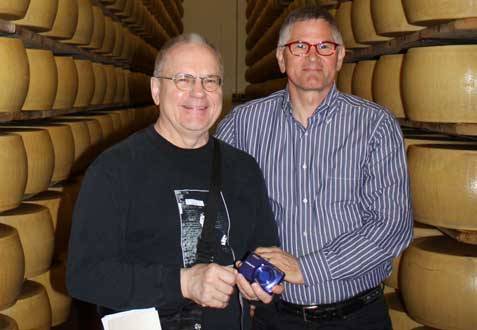
After brining, the wheels spend time in large aging rooms where the maturation process begins. They are placed on long wooden shelves, and turned periodically to keep the composition uniform throughout the cheese. One of the facilities we visited holds upwards of 80,000 wheels of cheese!
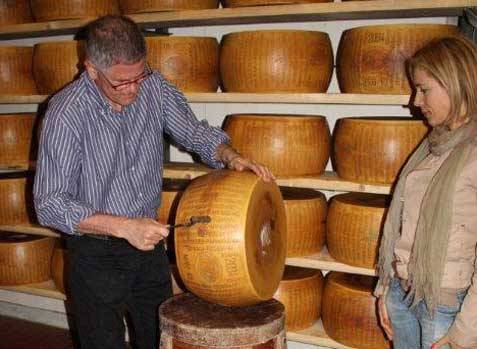
Finally, the wheels are examined by cheese experts throughout the aging process. One by one, they are inspected for exterior or interior flaws. To detect interior irregularities or holes, the wheels are tapped with a martello or small metal hammer. It takes a lot of experience, but the experts can actually hear tone changes signifying flaws. They also use a special tool to take out small cheese samples from inside the wheel. When the wheel passes all of the quality tests, it is branded with the Parmigiano-Reggiano markings.
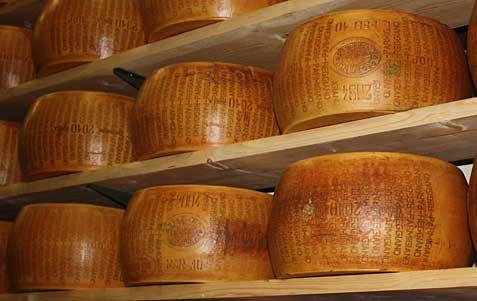
This aging process continues for at least 12 months and some wheels are aged up to 36 months. A finished wheel is the color of light golden hay.
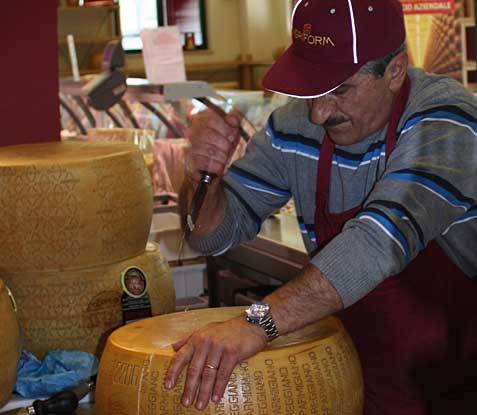
Now, time for the tasting! Wheels of Parmigiano-Reggiano are traditionally split using several almond shaped knives. The split isn’t always straight, as it follows the natural pattern of the cheese. Because of the extensive aging period, the inside is granular and crumbly in texture. The flavor is rich, nutty and smooth. You’ll also detect some well-balanced saltiness.
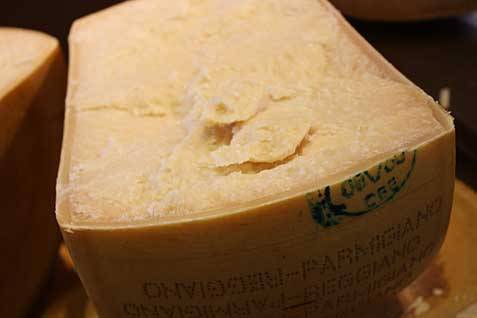
If you haven’t seen a live’ wheel splitting, ask your cheese specialist when they’re slitting their next wheel. It is truly an experience! The sweet and salty aroma of a freshly split wheel of Parmigiano-Reggiano quickly fills a room. The cheese is at its freshest and most flavorful state right after its split. Enjoy!


